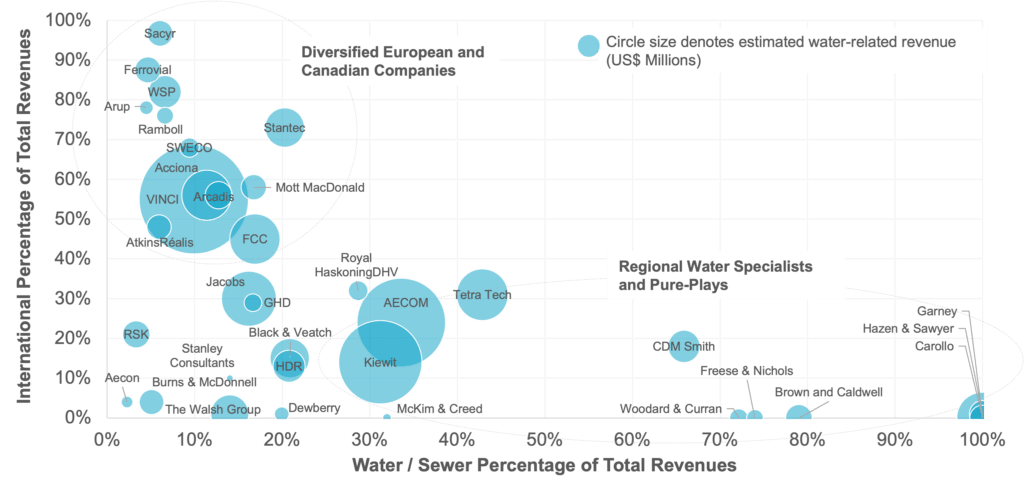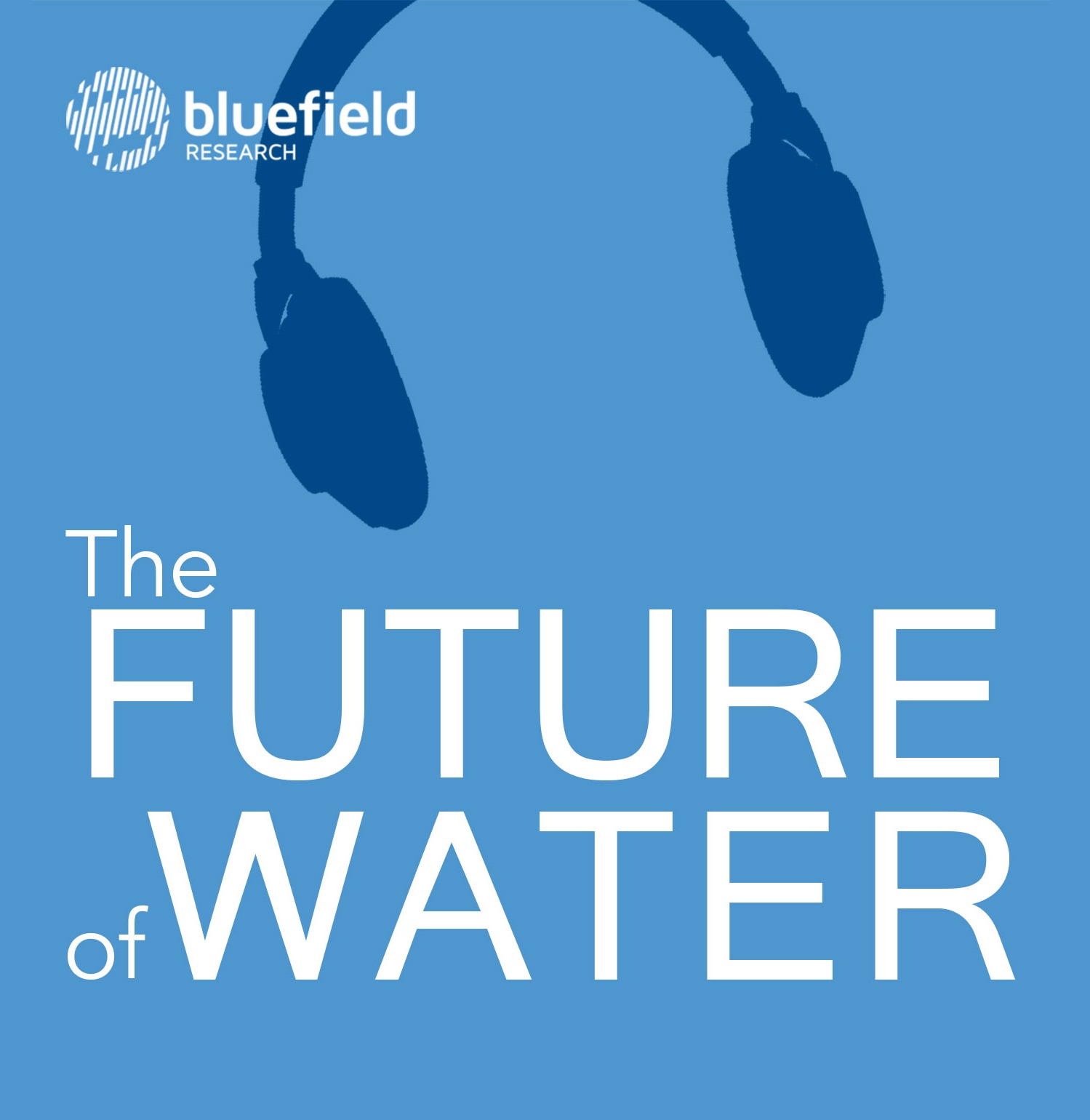Let’s face it—the earth’s temperature will sail past the 2030 target to limit the global warming threshold to 1.5 degrees Celsius (2.7 degrees Fahrenheit). Our collective fates are cemented in an increasingly volatile environment shaped by droughts, flooding, and large weather events (e.g., hurricanes and winter storms) resulting from climate change. At that point, if we are not there already, there will be no turning back in our lifetimes or our children’s.
What does this mean? Well, as Canadian hydrologist James P. Bruce coined, “If climate change is the shark, water is the teeth.” So, with all the carbon-focused, alphabet efforts (e.g., the Inflation Reduction Act, investment tax credits, and production tax credits) directed at turning down the global temperature, the real money will ultimately need to go toward the one thing we can’t live without: W-A-T-E-R.
According to the National Oceanic Atmospheric Administration, the U.S. alone has sustained 371 weather and climate disasters costing at least US$1 billion each since 1980, and in total exceeding US$2.62 trillion. Many of the disastrous events involved water. Even more concerning, is the fact that the 32-year annual average stands at 8.1 events, while the annual average for the most recent five years (2018–2022) has vaulted to 18. Through September of this year, the U.S. has already sustained 23 weather and climate disasters each exceeding one billion dollars, signaling what may lie ahead.
U.S. Billion-Dollar Disaster Year-to-Date Event Count, 1980–2023 (CPI-Adjusted)

Source: National Oceanic Atmospheric Administration
The financial and social consequences will be far-reaching and not limited to the developed or developing world; climate impacts have no borders.
To put things in context, here are five events showcasing how the conditions on earth might play out in the coming decades:
- In September 2023, a federal declaration was made to unlock additional support for local officials seeking to tackle the threat of saltwater intrusion into drinking water supplies in New Orleans, Louisiana. The water supply for more than 1.2 million people is currently expected to become unsafe to drink by late October, as drought conditions have enabled a surge of saltwater from the Gulf of Mexico to push upstream.
- On 31 May 2023, Uruguay’s National Administration of State Sanitary Works (OSE) announced that the 1.4 million residents of Montevideo would run out of water within a month.
- In the wake of Hurricane Harvey (August 2017), municipal officials in Houston, Texas, struggled to keep water treatment facilities operational after rainfall totals topped 51 inches. Facing the risk of being overwhelmed, the city’s 40 wastewater treatment plants (serving over 2.2 million people) flushed untreated wastewater into surface waters, putting the public at risk of disease and infection.
- In mid-February 2021, an arctic blast knocked out gas, power, and water services across approximately 13 southern states. Texas has borne the brunt of the impact, with power outages impacting over 5 million people at its peak loss; a total of approximately 14.4 million people were impacted by the outages, including the loss of access to drinking water. Throughout the storm event and its aftermath, 1,100 public water supply systems reported weather-related disruptions in Texas alone.
- Drought-stricken Cape Town residents were mandated to use no more than 13.2 gallons, (i.e., 50 liters) of water per day beginning 1 February 2018 on the way to “Day Zero.” The greater population of Cape Town is 4.6 million.
One segment of companies sits in pole position in the battle against climate threats and emergencies: engineering firms—particularly, those focused on water.
The influence of engineering firms in a climate-stressed world cannot be overlooked, and, in many respects, they stand apart. They are critical gatekeepers to many water-related decisions. In a “normal” climate, they provide a wide array of complex offerings, from system design and technology recommendations to construction and facility operations. These engineering firms now face a perfect storm—one in which they sit at the intersection of rehabilitating existing infrastructure, building for the future, and responding to catastrophes. All three are on the rise.
In the face of climate change, water infrastructure presents engineering firms with a multitude of opportunities, including the following:
- Climate resilient water infrastructure: As demand for reliable water supply and wastewater management grows, the number of lucrative contracts to design and construct resilient water infrastructure that can withstand these challenges will grow. This includes everything from upgrading aging treatment facilities to building advanced stormwater management systems. Bluefield’s forecast for utility infrastructure rehabilitation is currently US$233.7 billion through 2030; this number is expected to escalate in response to new, unforeseen climate stresses.
- Securing alternative supplies: Intensifying water scarcity and water quality concerns (e.g., saltwater intrusion) will increasingly guide water management strategies and engineering opportunities going forward. This includes designing and building water reuse and recycling systems, and, depending on the region, desalination.
The technology solutions exist, but their deployment has been slowed by regulations, project finance, and inertia. The onslaught of droughts and water stresses on residential and industrial customers, reaching from California to southern Spain, is already forcing policymakers’ hands to grease the development skids for US$25 billion of municipal reuse applications already in the U.S. and Europe project pipelines. As for desalination, the market opportunities will remain largely centered on global hot spots such as the Middle East, North Africa, and select one-off opportunities in Latin America and Asia.
- Sustainable urban development: Engineering firms specializing in urban planning and development can lead the charge in creating water-efficient cities. This involves integrating water-sensitive designs into urban infrastructure such as green roofs, permeable pavements, and sustainable drainage systems, ultimately reducing the urban heat island effect and enhancing overall quality of life. Representing 41.3 million people, 35 cities analyzed by Bluefield’s team signal current and future opportunities for engineering firms to address climate change mitigation, including those related to water and wastewater treatment.
- Energy transition: As the world shifts toward renewable energy sources to combat climate change, water plays a pivotal role in energy production and distribution. Engineers stand at the forefront of this change by designing innovative technologies that enhance the efficiency of hydropower generation, hydrogen, and renewable natural gas.
In navigating this dynamic landscape, engineering firms’ evolving approaches to water are being manifested through M&A and partnerships, new market entries, and innovative offerings (e.g., digital services and alternative delivery methods).
Bluefield Research’s recently released analysis and profiles of 35 leading engineering firms, firms point to their respective adaptations to a changing business environment. The companies analyzed reported US$217 billion in combined 2022 revenues, of which 15% (US$32 billion) is associated with water-related activities. It is our expectation that water’s share will scale, as the transition into the second act of climate change accelerates from trying to mitigate carbon emissions to addressing a new normal of water-related disasters.
Water Sector Engineers: Competitive Positioning

Source: Companies, Engineering News Record, Bluefield Research
What’s Behind Engineering Firms’ Strategy Shifts in Water?

Jacobs, one of the leading engineering firms in water, announced plans to spinout its Critical Mission Solutions business unit. With this move, the company streamlines their business focus, including on water, and boosts share price in the wake of higher margins and growth.

